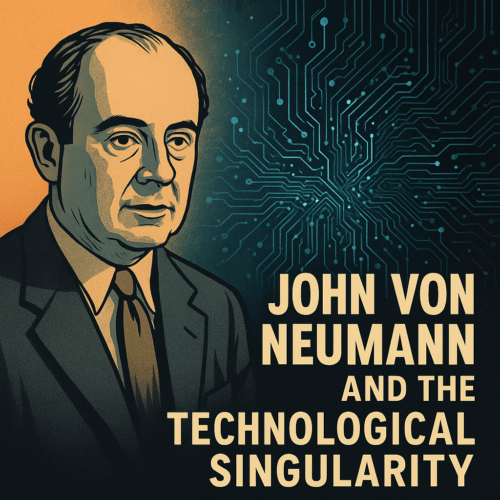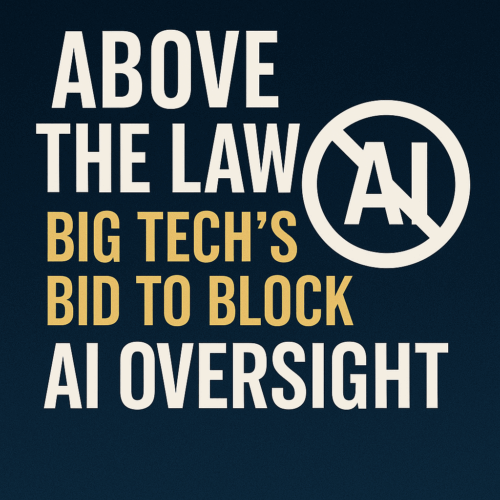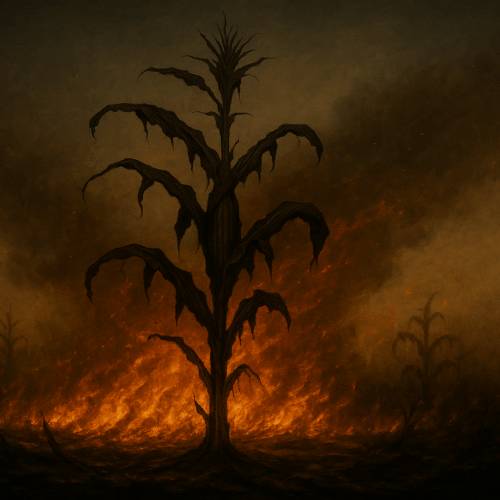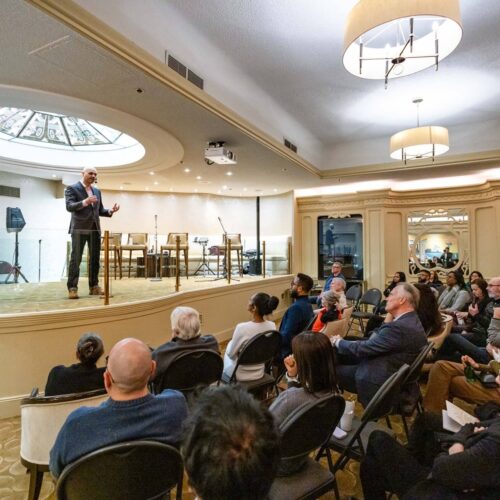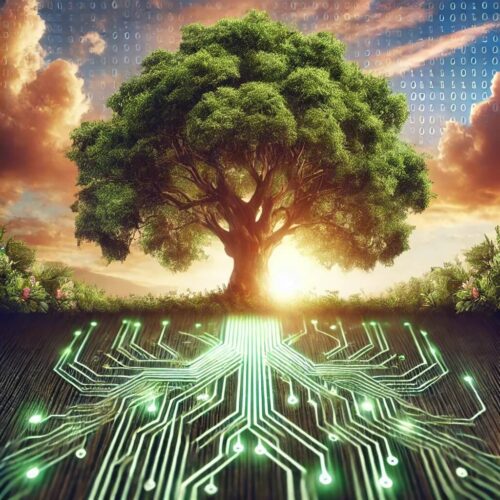Why We Age
Michael Fossel / Op Ed
Posted on: November 9, 2015 / Last Modified: April 15, 2024
Editor’s Note: This is a short excerpt from The Telomerase Revolution: The Enzyme That Holds the Key to Human Aging
and Will Soon Lead to Longer, Healthier Lives
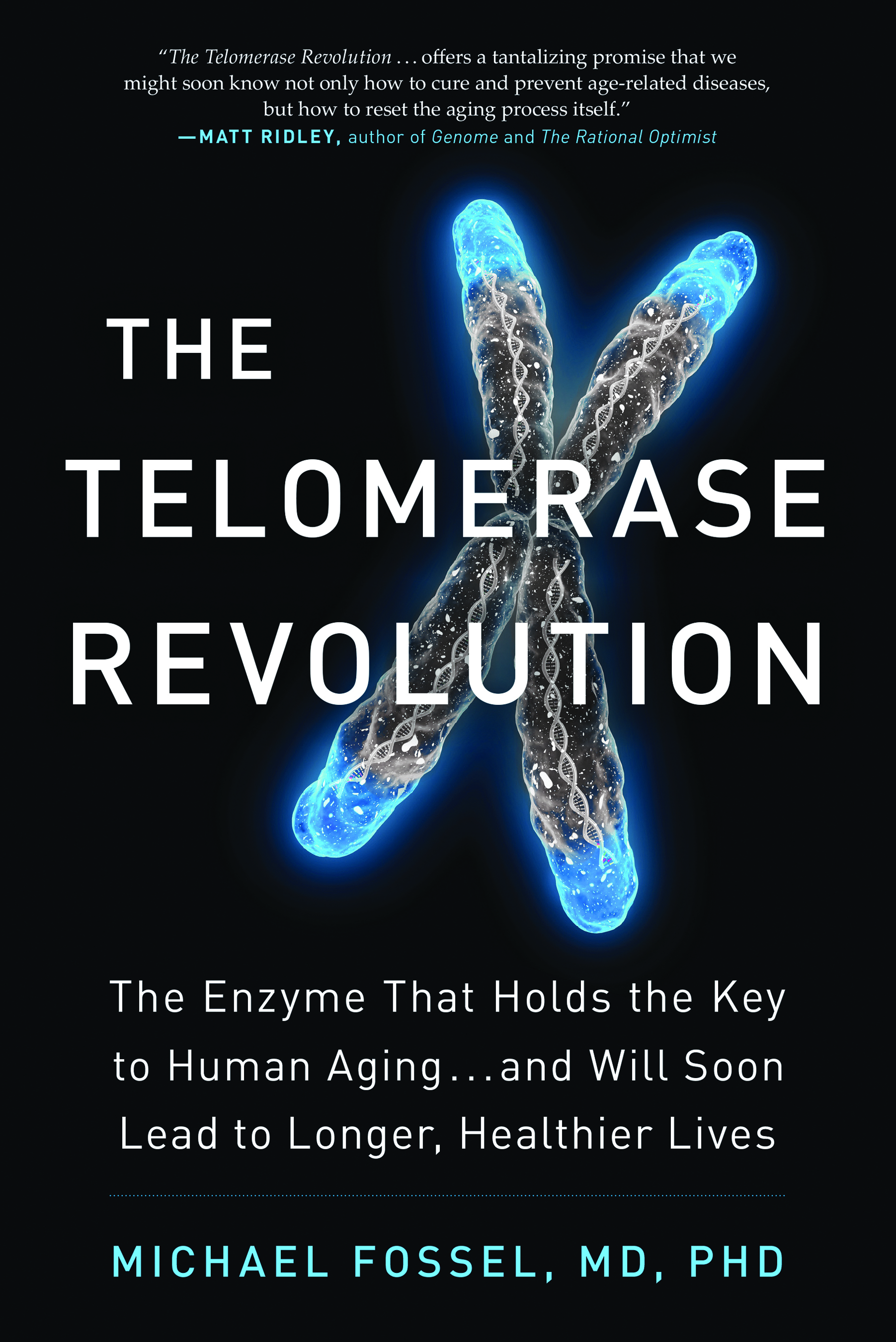 As you read in the last chapter, we age because every time our cells reproduce, our telomeres shorten. Each shortening of the telomere leads to increasingly poor cellular functioning. This, in a nutshell, is the telomere theory of aging, and it tells us an enormous amount about how we age, as you will see in the rest of this book.
As you read in the last chapter, we age because every time our cells reproduce, our telomeres shorten. Each shortening of the telomere leads to increasingly poor cellular functioning. This, in a nutshell, is the telomere theory of aging, and it tells us an enormous amount about how we age, as you will see in the rest of this book.
In this chapter, however, I want to take a brief diversion to ask another question: Why do we age? Earlier theories of aging tend to avoid this question. If we are aging because of wear and tear or free radicals, the answer is clear: We age because aging is inevitable. Despite our bodies’ best efforts, the accumulated damage eventually overcomes our ability to repair that damage.
But the telomere theory of aging makes the question of why we age far more interesting. Our cells all have the gene for telomerase. They could express telomerase, just as our germ and stem cells do. But they don’t. Apparently, our bodies, rather than aging as the result of an inevitable physical process, are, in fact, designed to age. Our bodies age on purpose.
Evolutionary Thinking
“Evolution is cleverer than you are.” Leslie Orgel, evolutionary biologist
Any time we ask why something happens in biology, we are asking an evolutionary question. The functioning of every living thing on this planet is the result of billions of years of evolution, and virtually every aspect of your body is the result of the relentless workings of evolution. If aging didn’t make good evolutionary sense for a species, then organisms wouldn’t age. Somehow, aging makes it more likely that our genes will replicate and our species will survive.
Asking why can feel like an endless children’s game, but in biology the whys generally end with an evolutionary explanation.
For example:
Q: Why do we get hungry?
A: Because we haven’t eaten in a while.
Q: Why does not eating make you hungry?
A: Because when you haven’t eaten your body produces less leptin, and that causes you to feel hungry.
Q: Why does your body do that?
A: Because animals that didn’t get hungry didn’t work as hard to find food, and didn’t survive to reproduce, while animals that got hungry survived. People inherited this trait from their animal ancestors.
Note that it’s very tempting to say that your body “wants” you to eat or that evolution “wants” you to eat. I’ll use this shorthand occasionally, but it’s important to remember that saying “want” is only convenient shorthand. Evolution doesn’t “want” anything, but if you don’t eat, then your genes don’t survive. In this chapter we are asking, “Why does our body want to age?” but this is shorthand. The real question is this: Why did animals that age out-survive and out-reproduce animals that didn’t age? Why does aging make a species (and its genes) more likely to survive?
Because multicellular animals began aging billions of years ago, any answer to the question of why we age is inherently speculative. But asking the question can teach us a lot about evolutionary reasoning and the nature of the evolutionary process.
Evolutionary Cost-Benefit
Why aren’t lions faster? Lions can run at an impressive fifty miles per hour for short bursts, but their prey are equally fast. Wildebeest can run at fifty miles per hour as well. Zebras and Cape buffalo can run at around forty miles per hour. Because lions survive by chasing down prey, why haven’t they evolved to run as quickly as a cheetah, which can run seventy miles per hour?
Because, as with everything in evolution, there are tradeoffs. Cheetahs can reach incredible speeds because their slender bodies, small heads, and long, thin legs are very aerodynamic. They have oversized hearts and large lungs and nostrils to allow their muscles to stay oxygenated at these speeds. But these benefits come at a price. The cheetah’s small head means smaller teeth and weaker jaws than most predators.
A faster running lion might find it easier to catch prey, but may need to be less muscular and more aerodynamic. This faster lion might fall victim to competitions with other lions and never live to reproduce.
The point is that to understand why evolution takes a certain direction, it’s necessary to look at tradeoffs between the costs and the benefits.
This brings us to the question of aging. Wouldn’t it be a big evolutionary advantage to live and reproduce indefinitely? Animals that didn’t age could theoretically produce many times more offspring than their aging competitors.
It turns out that aging has a much lower cost than it might seem. While there is great variation in lifespan from species to species, most animals do not live a full lifespan and die of old age. Starvation, interspecies competition, predation, disease, and cancer kill most animals long before they reach old age. Aging isn’t a factor in their deaths. The “cost of aging” only applies to those animals who reach a point where aging is a factor in their death.
There’s another factor that is a little more subtle. Organisms function in their own ecological niches, which can only support so many of each species. The limiting factor in the number of deer, for example, isn’t the rate at which deer can reproduce. It’s based on the availability of food and prevalence of predators. If a given area can support a population of 1,000 deer, what would happen if another 1,000 deer were suddenly added? Starvation and predation would soon reduce the population back to 1,000.
With this in mind, imagine a small group of ageless deer that reproduce indefinitely. These deer are a small subset of the total population of deer, which age normally. The aging deer, like all species, continually evolve in response to changes in the environment.
But the ageless deer are producing offspring that represent an earlier evolutionary phase. With each generation the offspring of the ageless deer are less fit than the offspring of aging deer. These ageless deer would be quickly be crowded out.
This last point is the key issue in the evolution of aging. If a species has a long lifespan, then it can’t adapt as quickly as a species with a shorter lifespan. It’s a bit like the turning radius of a car—if the turning radius is shorter, the car can turn sharper corners. If a species lives a long life and has offspring late in life, then the “turning radius” of the species may not keep up with rapid changes in its physical or biological environment. If the temperature, oxygen, pH, or some other physical aspect of the environment changes, a species needs to change with it. If the biological competition or a prey species changes quickly, then once again, a species with a shorter lifespan can adapt more quickly and is more likely to survive. On the other hand, if the environment—physical or biological—is stable, then longer lifespans are advantageous to survival. Lifespan and the rate of aging have to be finely tuned not just to the environment, but also to the rate at which the environment changes.
So the benefits of “agelessness” are much lower than it might seem, for two reasons: Most deaths occur before aging decreases fitness, and agelessness slows the rate of evolution. Aging has benefits to a species, but the costs to an individual—aging and disease—are severe.
Historically, we’ve sometimes assumed that aging was simply part of being multicellular. As it turns out, some multicellular organisms (like hydra) don’t age, while some unicellular organisms (like yeast) do age.
The Multicellular Dilemma
Multicellular life first evolved around one billion years ago, after an estimated 2.6 billion years during which only single-celled organisms lived. Early multicellular life was in the form of cooperative colonies, in which single-celled organisms could thrive better than they could on their own over time.
Multicellular life eventually learned to differentiate cells to allow for more sophisticated organisms with specialized germ cells for reproduction. Consider how radical this change was for the cells of multicellular creatures. For billions of years cells had evolved to survive and reproduce. The single-celled organisms that reproduced most rapidly and most successfully crowded out those single-celled organisms that were not as aggressive.
Now, as part of a multicellular life form, cells had to learn a very different way of behaving. Cells had to operate responsibly to perform their roles in support of the whole organism. They had to divide only when needed for the benefit of the organism. A cell that divides too rapidly—when the organism doesn’t need it to divide—is a cancer cell, which kills the organism. Organisms with cells that reproduced willy-nilly were selected against; organisms that carefully controlled their cells survived and prospered.
Multicellular creatures evolved to control their cells’ reproduction. What was the mechanism of that control? Part of that mechanism was cell aging.
The Hayflick Limit provides a harsh but powerful tool for controlling cell reproduction. After a certain number of divisions, cells simply couldn’t reproduce any further. With each cell division, the telomeres shorten, and after forty or so divisions, most cells simply can’t divide any further. This mechanism of control came at a price—aging and death from aging—but, as we saw earlier, this price wasn’t all that high, evolutionarily speaking, and may have had some benefit in fine-tuning the rate at which a species can adapt to environmental changes.
Why Do We Age?
While the complete answer to why we age may never be known, it seems quite likely that aging was a product of evolution—a tool to enhance a species’ ability to adapt quickly to environmental change. So if evolution “chose” aging, can scientists develop tools to “unchoose” it in whole or in part? This brings us to the next chapter, in which we leave theory behind and examine the progress we’ve made applying the telomere theory of aging to improving health and lengthening lives.
Excerpted from The Telomerase Revolution: The Enzyme That Holds the Key to Human Aging and Will Soon Lead to Longer, Healthier Lives. Reproduced by arrangement with the Publisher. All rights reserved.
About the Author:
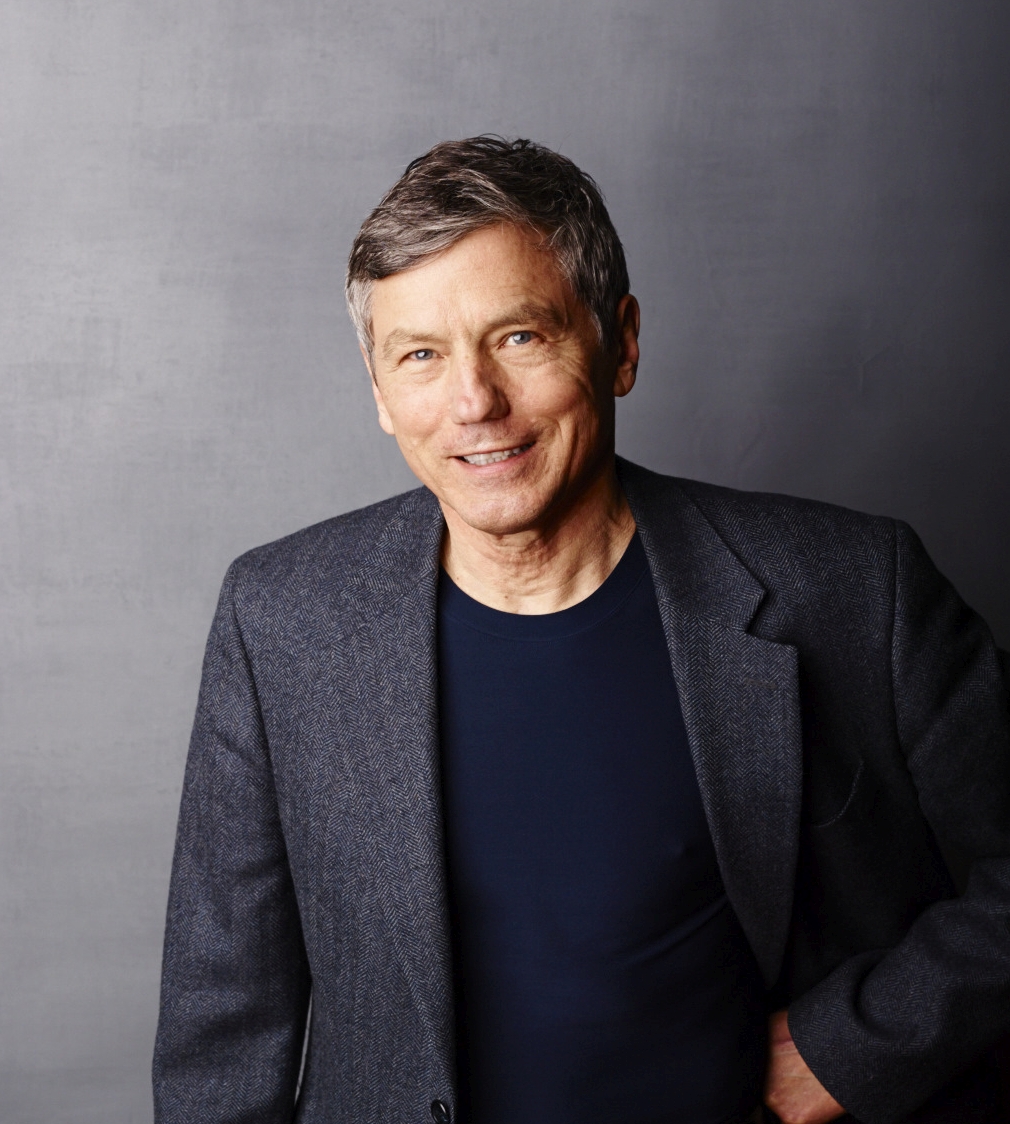 The world’s foremost expert on the clinical use of telomerase for age-related diseases, Dr. Michael Fossel has lectured at the National Institute for Health and the Smithsonian Institute, and continues to lecture at universities, institutes, and conferences throughout the world. He has appeared on Good Morning America, ABC 20/20, NBC Extra, Fox Network, CNN, BBC, Discovery Channel, and regularly on NPR. He is currently working to bring telomerase to human trials for Alzheimer’s disease.
The world’s foremost expert on the clinical use of telomerase for age-related diseases, Dr. Michael Fossel has lectured at the National Institute for Health and the Smithsonian Institute, and continues to lecture at universities, institutes, and conferences throughout the world. He has appeared on Good Morning America, ABC 20/20, NBC Extra, Fox Network, CNN, BBC, Discovery Channel, and regularly on NPR. He is currently working to bring telomerase to human trials for Alzheimer’s disease.
Related articles
- The Search for Immortality
- Michael Fossel on Singularity 1 on 1: Compassion is the reason to reverse aging!
- BioViva CEO Liz Parrish on Singularity 1on1: Gene Therapy is NOT a Monstrous Science
- Aubrey de Grey on Singularity 1 on 1: Better Funding and Advocacy Can Defeat Aging
- Until: Who wants to live for ever? [A Short Doc]
- Bill Andrews on Singularity 1 on 1: Ageing is not going to cure itself!
- The Immortalists: David Alvarado and Jason Sussberg on Singularity 1 on 1


